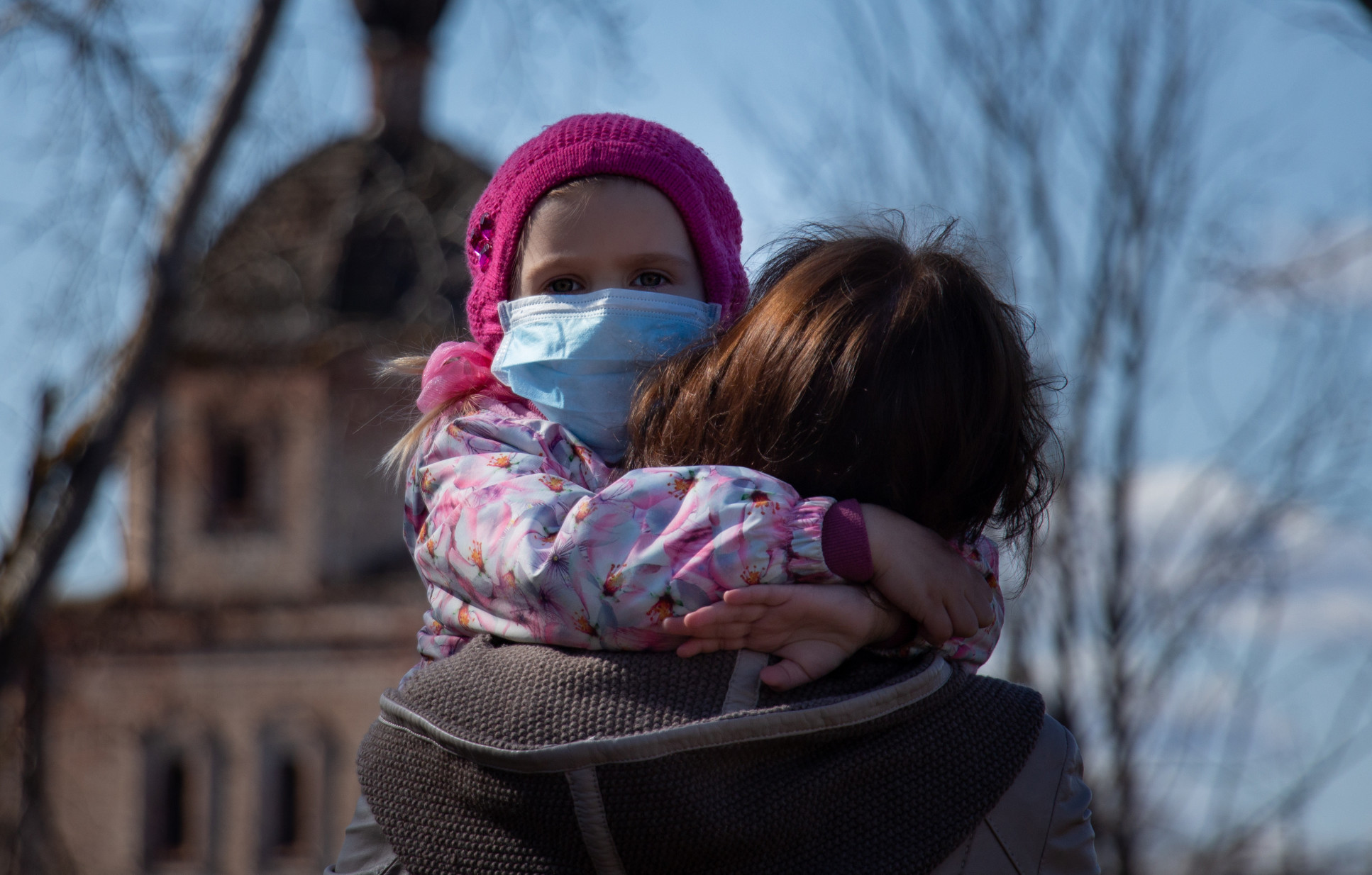COVID-19 complications in children: What we’ve learnt about PIMS and long COVID

Dr Elizabeth Whittaker discusses the evolution of research into PIMS - a rare inflammatory condition in children linked to COVID-19 - and long COVID.
In the early stages of the pandemic, researchers in the UK and Europe began to recognise the emergence of a new inflammatory syndrome in children linked to COVID-19. By June 2020, a team at Imperial College London and collaborators in hospitals across England had identified the condition as Paediatric Inflammatory Multisystem Syndrome Temporally associated with SARS-CoV-2, often referred to by the acronyms PIMS-TS, PIMS or MIS-C.
Although extremely rare, researchers were eager to better understand the syndrome and find new treatments. Similarities between PIMS and Kawasaki disease – another rare inflammatory condition that typically affects children under the age of five – gave rise to concerns around long-lasting heart damage.
Dr Elizabeth Whittaker is an Honorary Clinical Senior Lecturer in the Department of Infectious Disease at Imperial College London, and a Consultant in Paediatric Infectious Diseases and Immunology at Imperial College Healthcare NHS Trust. Throughout the pandemic, Dr Whittaker has led research into PIMS and continues to investigate the broader picture of why a small number of children develop rare COVID-related complications, including long COVID.
We spoke to Dr Whittaker about how research into PIMS and long COVID in children has developed since the outset of the pandemic.
You can also listen to an abridged version of this interview as part of the Imperial College podcast.
Looking back to the early stages of the COVID-19 pandemic, how were you able to identify and characterise PIMS?

In April 2020, we were largely focused on helping our colleagues to look after adult patients in hospital with COVID, until we started to see children being admitted who were also very unwell. Their symptoms were similar to those seen in Kawasaki disease – fever, rashes, red eyes and lips, sometimes stomach pain – but they were older than the typical Kawasaki patient. Toxic shock syndrome was another possibility, but that didn’t quite fit as a diagnosis either.
We saw a couple of cases here at St Mary’s Hospital, as did our colleagues at the Evelina London Children's Hospital and Great Ormond Street Hospital (GOSH). Together, we began to discuss our observations and reached out to paediatric intensive care units across the UK, who also reported similar feedback. We asked everyone for information about the symptoms they were seeing, as well as blood test results and biochemical parameters. We methodologically reviewed each case looking for similarities and differences. We also put out a national alert which was initially echoed across France, Italy and Spain, and then later across the United States.
To create the paper that we published in the Journal of the American Medical Association, we gathered a cohort of 58 children in the UK and prepared tables showing the presentation of their symptoms, and compared this to what we would typically see in Kawasaki disease and toxic shock syndrome. By doing this, we were able to show that this really was a distinct condition.
In June 2021, you were part of an international team of researchers looking at a larger cohort of around 600 children diagnosed with PIMS to identify the most effective treatments. What were the key findings?
In Kawasaki disease, there’s a risk that around 15 to 20 per cent of children will develop damage to their coronary arteries, which are blood vessels around the heart. Because PIMS is a similar condition to Kawasaki disease, we were worried that it might also be associated with blood vessel damage. Therefore, we started out using the same treatments that we use for Kawasaki disease and toxic shock syndrome, either intravenous immunoglobulin therapy (IVIg) or corticosteroids. For patients who don’t respond to these approaches, we can use synthetically-made antibodies (monoclonal antibodies) which target specific parts of the immune response.
We were basing our treatment choices on our past experiences of dealing with Kawasaki disease and toxic shock syndrome, but we needed to be more certain about the most effective treatments for PIMS. Our Best Available Treatments Study (BATS) was a massive, multi-national observational study in which we gathered anonymised data from over 600 patients, looking at their symptoms, what treatments they were given and their outcomes in an effort to see which approaches worked best.
We found that all the treatments – IVIg, corticosteroids and monoclonal antibodies – worked, which was really good news. From a global health perspective, it was especially reassuring to find that steroids alone were an effective treatment for PIMS. Compared to other therapies, steroids are cheap and readily available for those in low-resource settings. The findings from this study have gone on to help shape clinical guidelines both nationally and on a global scale.
More recently, you’ve looked at the risk factors underlying why a small proportion of children are admitted to paediatric intensive care or die with PIMS and COVID. What are some of the key things that we know now about this condition that we didn’t when it was first identified?
"Early treatment and close monitoring is key to preventing severe outcomes" Dr Elizabeth Whittaker
We know now that early treatment and close monitoring is key to preventing severe outcomes. If treatment is started early enough, you can stop the inflammatory process and decrease the risk of a child being admitted to intensive care. In the UK, we’ve thankfully had very few deaths as a result of this condition. The death rate in other settings is still low, and this is something most children recover from, but it is relatively higher compared to the UK.
At Imperial, we are collaborating as part of an NIH-funded study in the US called PreEVAIL, which is looking at diagnostic and prognostic indicators. Excitingly, we have identified a unique transcriptomic signature for children with PIMS, which is essentially a picture of how your immune system is activated at a cellular level. This will help us to develop diagnostic tools to distinguish the condition from other febrile conditions in children. We are validating this at the moment with samples from the UK, Europe and the US, but it could translate into a point-of-care test.
Although we now know quite a lot about PIMS, it’s still quite difficult to distinguish as a frontline clinician working in A&E, because children are admitted with fevers all the time. Having a definitive way of narrowing the diagnosis down to PIMS will be really beneficial.

You’ve also done research into the impact and prevalence of long COVID in children. Do the symptoms differ from those seen in the adult population?
Understanding what long COVID is in children is a very challenging question. Broadly speaking, it’s the presence of persistent symptoms up to 12 weeks following infection. As part of the CLoCk study, we’ve asked children in the community who’ve had confirmed COVID, and also those who’ve not, to complete a questionnaire telling us about how they feel, their symptoms and experiences, and their emotional wellbeing. The difficult thing is that persistent symptoms like headaches, fatigue, stomach ache are common in both those who’ve had COVID and those who haven’t. It doesn’t seem to be just a direct effect of infection, but of the pandemic as a whole.
Working with NHS England, our research team have set up 15 clinics nationally, where we’ve seen a smaller subset of children who are extremely debilitated by long COVID, with extensive and broad-ranging symptoms. This is very uncommon, but this group of children urgently need proper assessment and support to get back to full health.
Some non-hospitalised children develop symptoms four to five weeks following COVID infection, and I’m curious to see if these children have a relatively milder version of PIMS. This is why we must understand the pathogenesis of the condition. It’s something that researchers across Imperial are currently investigating along with our collaborators at the Evelina and GOSH. The work is at a very early stage, but hopefully it could lead to a diagnostic test and help us to understand what treatments are most effective.
The Joint Committee on Vaccination and Immunisation (JCVI) recently updated its guidance to allow all children aged between 5 and 11 to receive two doses of the Pfizer BioNTech COVID-19 vaccine. What impact do you think this will have in terms of mitigating the risk of PIMS and long COVID?
It’s very hard to know at this stage. We know that the Pfizer vaccine prevents severe disease, hospitalisation and death, which are outcomes that are thankfully extremely rare in children and young people, particularly in the 5-11 age group.
Preliminary data is coming from the US that does seem to show a decrease in the risk of developing PIMS following COVID infection. However, what we don’t know is whether you can get PIMS following a second COVID infection. During the Omicron wave in the UK, there was an uptick in children admitted to hospital, but we haven’t seen a subsequent peak in PIMS cases. That could be because of changes to the spike protein in the Omicron variant, which might help us to answer some questions around what causes PIMS. It could also be that some children were protected by immunity gained from prior infection and/or vaccination. This would support the case for vaccination, as it would suggest that if you have an underlying immune response from a jab, you’re less likely to develop PIMS.
However, the majority of children in the UK now have antibodies or evidence of prior SARS-CoV-2 infection, so the additive value of the vaccine is still unclear. We know that vaccination provides a longer-lasting immune response, particularly in people who’ve had prior infection. Therefore, vaccinating children who have previously had COVID may prolong or strengthen their protective immunity, which may, in turn, protect against PIMS. However, at the moment, more research is needed.
Until we know what causes long COVID, it’s hard to know whether the vaccine will protect against it or not. There’s conflicting evidence around whether vaccines protect against long COVID in adults. It makes sense that if you decrease infection and transmission, you would also see a decrease in long COVID cases. However, there are a lot of questions we need to answer before we can say with any certainty that vaccines protect against long COVID in children.
What research are you currently doing in terms of understanding COVID-related complications in children?
"It’s vitally important that we find answers to these key questions in order to help children and young people" Dr Elizabeth Whittaker
As part of the PreVAIL and DIAMONDS studies, we are validating the transcriptomic signature for PIMS and working with researchers from Imperial’s Faculty of Engineering to develop a point-of-care test.
We’re also recruiting children with long COVID who attend the clinical services that I help to co-lead. We’re hoping to include this group in the DIAMONDS and PreVAIL studies to see if there is a transcriptomic signature that can identify long COVID in children from a diagnostic perspective. We also want to find out how similar this signature is to that seen in PIMS patients – are they related conditions, or completely separate?
We’re collaborating with colleagues at the Evelina, UCLH, as well as Professor Danny Altmann and Professor Rosemary Boyton at Imperial, to try and understand the pathogenesis of PIMS. To do this, we’re carrying out MRI scans of the brain and lungs and a range of other tests to better understand the disease and its impact on the body. It’s vitally important that we find answers to these key questions in order to help children and young people, and continue to build on the incredible collaborative work that we’ve seen throughout the pandemic.
Article text (excluding photos or graphics) © Imperial College London.
Photos and graphics subject to third party copyright used with permission or © Imperial College London.
Reporter
Ms Genevieve Timmins
Academic Services